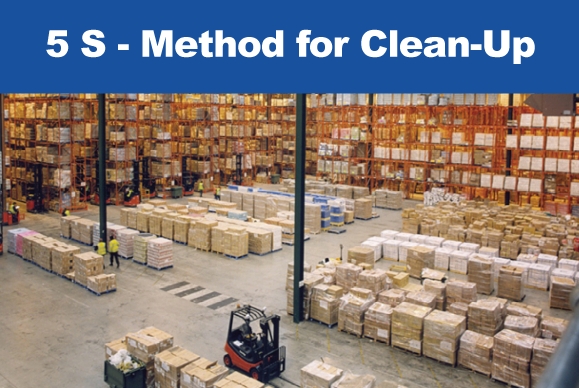At the basis of the various “temples” which represent Total Production Maintenance or the Toyota Production System, there is always the 5S method in one way or another..
This tells us that this method is fundamental and unavoidable for the companies who are interested in achieving Lean Production.
But why then is it that the application of 5S in companies often leads to the only outcome of having done a big cleanup job?
I believe that a good part of the answer lies in the misunderstanding of what the second point of the 5S implies.
Brief summary of the meaning of the 5S:
1S: Sort = Select and separate from the useless
2S: Set in Order = Organize
3S: Shine = Clean thoroughly
4S: Standardize = Create standards
5S: Sustain = Sustain the system
After having completed the 1S and therefore having separated and eliminated everything that is not necessary to the work station or from the area where the 5S are being applied, we must move on the second S; organize.
It is at this point that the participants of the team (if not prepared earlier), begin to organize things and areas according to their personal points of view and their aesthetic sense. Often, it is possible that underground conflicts may be created, not stated, which mine from the start the positive outcome of the method.
Before moving on to the second S, it is important to teach well how to eliminate or reduce the 7 Muda as much as possible. Delving into the study of the 7 Muda, it will be possible to see that later on it will be necessary to explain the Just in Time concepts.
Here below is an example of what the implication of the knowledge of the 7 Muda and Just in Time entails in the application of the second S.
7 Muda | Consequences | Just in Time |
Transportation Muda | Objects must be as close as possible to the worker who needs them. | The supplying paths must be grouped together and not intersect. |
Inventory Muda | The quantity of inventory material must be such to not create transport and motion muda. | In order to stock up, a Kanban or synchronized logistic course must be created. |
Overproduction Muda | The defined areas must pre-emptively impede the temptation of overproducing. | Only the quantity of components needed must be stocked.
|
Defects Muda | The quantity of inventory material must be minimal in such a way as to avoid that a possible qualitative defect have an effect on a large number of components and semi-finished products. | In order to stock up, a Kanban or synchronized logistic course must be created. |
Motion Muda | The quantity of inventory material must impede motion muda | PIn order to stock up, a Kanban or synchronized logistic course must be created. |
Waiting Muda | The quantity of inventory material must impede stock breakage. | In order to stock up, a Kanban or synchronized logistic course must be created. |
Processing Muda | ||
From the understanding of the table here above it is possible to deduct that before carrying out any type of training and 5S action it would be better to train and be trained in the 7 Mudas and in the basic principles of Just in Time.
The work team would know how to appropriately conduct the second S (and the others), avoiding that the 5S workshop be transformed in a large cleaning operation.
Mario Mason
Kaizen Coach






